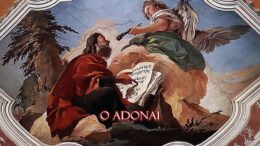Father was wearing violet today. Immediately, you know: no flowers on the altar, no organ, Mass XVII and no Gloria in Excelsis.
We started with the classic, O Come, O Come, Emanuel as the processional.
At the Offertory, we sang the delightful, Advent hymn, Creator Alme Siderum. It is interesting because the melody is very sweet and sing-songy, almost a lullaby, and yet the lyrics speak to the great majesty of Our Lord as Creator of the heavens and Redeemer of the world.
Part of singing the Divine Office is to chant The Magnificat each evening at Vespers. Of course, an antiphon is chanted both before and after. Beginning on December 17th and continuing until December 23rd, seven very particular and very ancient antiphons are used. They are referred to collectively as the Great Antiphons. Each starts with the exclamation, O, and then refers to Our Lord by a particular title (for example, O Wisdom, or O Dawn). For this reason, they are also known as the O Antiphons. (Note that these antiphons form the basis for the popular hymn, O Come, O Come, Emmanuel.)
At the Communion, we sang the O Antiphon for this day (O Adonai) both before and after we sang The Magnificat.
O Adonai, and leader of the House of Israel, who appeared to Moses in the fire of the burning bush and gave him the law on Sinai: Come and redeem us with an outstretched arm.
And finally, our last gasp for Advent, observing that once again that John the Baptist is mentioned in the Gospel, we sang Hark, a Herald Voice is Calling as the recessional.
